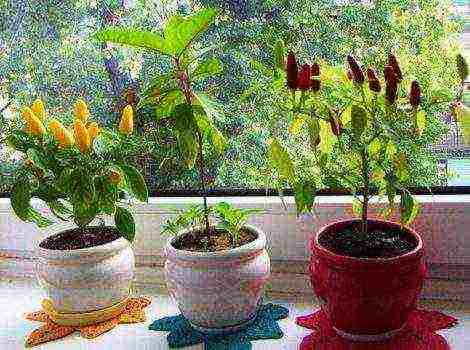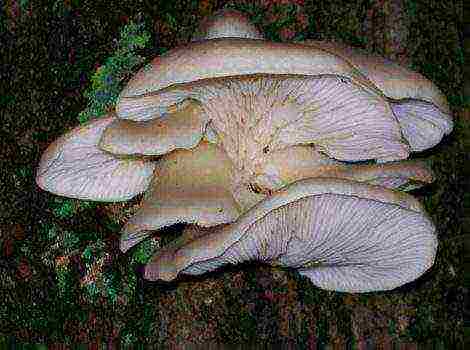Content
Physalis is a plant from the nightshade family. Translated from the Greek language "physalis" means a bubble. The people call this plant differently: earthen cranberry, marunka, emerald berry, however, the most common is the bubble. This name is not accidental and it is associated with the shape of physalis - a growing red-orange calyx.
Some summer residents compare physalis with tomatoes. And although they are somewhat similar, in particular, in fruits, growing physalis, caring for it is very different from tomatoes. In addition, not all varieties of physalis can be used for food. There are purely decorative species.
The main varieties of Physalis
All types of Physalis are divided into three categories:
- Decorative Physalis. This species is also called physalis Franchet. The flower is extraordinarily beautiful, it has the shape of a Chinese lantern. Bright orange boxes look great in the garden, they are a wonderful decor for flower beds. The peculiarity of this species is that Physalis Franchet grows on any soil, tolerates temperature changes well, does not require special care. Many gardeners prepare original winter bouquets from physalis boxes.
- Vegetable Physalis. Gardeners especially love him, since he not only adds beauty to the garden, but also gives edible fruits of orange or bright red color, from which you can make delicious jam, pickle. Fruits come in different sizes and weights - from 30 g to 150 g. Vegetable Physalis is unpretentious in cultivation.
- Strawberry (berry) Physalis. Unlike vegetable physalis, strawberry fruits are much smaller. Their weight is approximately from 1 g to 4 g. Very rarely, fruits of this species can reach 9 g. Unlike ornamental and vegetable species, berry physalis is very sensitive to frost, the ripening period of fruits is much longer, but the taste is superior to all types ... In turn, berry physalis is divided into several varieties: raisin, Peruvian and Florida. It is from these varieties that you can make an amazingly tasty jam.
How to grow Physalis from seeds at home?
In southern areas, Physalis seeds can be sown directly into open ground. Moreover, in the future, this plant will not have to be bred, since it will multiply by self-seeding. It will only be necessary to transplant the seedlings to a specially designated place for them.
Sowing is done in mid-April. Seeds are introduced into a shallow groove, the interval between rows should be at least 30 cm. After the seeds germinate, the seedlings will need to be thinned out. The distance between the shoots should be 25 cm.
Attention! Seedlings transplanted to a new place will take root well, but they will bear fruit later than others.
Since Physalis is a frost-resistant plant, it can be sown before winter - in mid-October.
Growing Physalis through seedlings
Before proceeding with sowing seeds for seedlings, it is necessary to properly prepare the soil and soil. You can, for example, purchase a special soil designed for growing nightshades, or prepare yourself: 2 parts peat + 1 part compost + 1 part garden soil + ½ part fine sand. You can add a little wood ash to the mixture - this will reduce the acidity of the peat (for 5 kg of the mixture, you will need 2 salt spoons of ash).
When the soil is ready, fill the containers in which you plan to grow physalis.After that, start sowing seeds, but first they will need to be neutralized. This can be done as follows: take a small piece of gauze, roll it up in several layers, put the seeds, and immerse in a manganese solution for about 20 minutes. In order for the seeds to sprout quickly, they can also be placed in a growth stimulant solution - Epin (for 100 ml of water - 2 drops of Epin).
The seeds prepared for sowing are planted in the ground at the same distance from each other, slightly from above, about 1 cm, sprinkled with soil, pressed down with the palm of the hand. After that, the soil must be carefully watered.
The container is covered with glass or a transparent plastic bag, placed in a bright and warm place (air temperature from + 15 ° C to + 20 ° C).
The first shoots will appear in about 7-10 days. Immediately remove the glass from the container, make sure that the soil does not dry out, water it in a timely manner.
When and how to pick seedlings?
It is necessary to dive seedlings during the period when the sprouts reach the phase of 2-3 true leaves. The sprouts are transplanted into separate containers filled with soil, which is almost the same in composition as for sowing seeds. The only difference is a decrease in the amount of sand by about 2 times and the introduction of top dressing (for 5 kg of soil - 1 tablespoon of complex mineral fertilizer).
The soil in the container is compacted, such a deepening is made in it so that the roots of the sprouts can fully fit in it. After that, seedlings are carefully planted, covered with earth, watered with water. Seedling containers are installed in a well-lit and warm place. It is recommended to feed once every 2 weeks.
20 days before planting seedlings in open ground, the seedlings should be hardened - they should be taken out into fresh air, but provided that there is no frost.
Planting seedlings in open ground
The place for growing physalis must be prepared in advance. First of all, it is necessary to choose a site where nightshade crops have not previously grown on it - tomatoes, eggplants, peppers. It is imperative to fertilize the soil - add 50 g of nitroammophoska per 1 square meter. If the soil is too acidic, you can remove it with wood ash (300 g per 1 sq. M). It is imperative to dig the earth to a depth of 30 cm.
Make holes in the garden, plant physalis sprouts in them. The distance between the holes should not be less than half a meter, and between the rows - 70 cm. The seedlings are deepened to the first leaf, dug in, lightly tamped and watered with water.
In order for the seedlings to grow stronger, they must be watered, loosened, freed from weeds, and fed in a timely manner.
Attention! Physalis does not stepchild or tie. The more branches it has, the more fruits will appear.
Berry physalis, unlike vegetable, is more capricious and less resistant to frost. However, it is quite possible to grow it on a balcony or on a windowsill. All your labor is offset by the sweet taste of the berries.
The choice of physalis varieties for growing on the balcony and windowsill

Physalis on the windowsill
The Raisin variety gives sugar berries that are not large in size, but have a bright aroma and a very pleasant taste. The fruits can be eaten fresh, dried, processed.
The Pineapple variety produces small fruits. Their aroma is similar to pineapple, the taste is sweet, very pleasant. The appointment is universal.
Strawberry physalis forms bushes about 70 cm high. Fruits are small, amber, very sweet, with strawberry flavor and aroma. The appointment is universal.
Growing physalis on a windowsill
How to grow physalis at home? For planting on loggias, seeds are used - they are sown in March, after having kept for 20 minutes in a pink solution of potassium permanganate, and then dried. If there are doubts about the germination of seeds, you can hold them for 12 hours in water mixed with Epin (1-2 drops / 100 ml).
The soil mixture is prepared from peat, humus, turf and sand (2/1/1 / 0.5).If the peat has an acidic reaction, add wood ash (0.5 st. / 5 l). The mixture is steamed for an hour to get rid of possible pests.
The depth of immersion of the seeds is 1-2 cm. The sowing is watered with warm water and left on the sunny side, covered with a film (it must be removed daily for airing).
Seedlings are transplanted into separate pots after a couple of leaves appear. Drainage is placed on the bottom and the pots are filled with soil mixture prepared according to the previously indicated recipe (the sand rate can be reduced, and mineral fertilizer should be added to 5 liters of the mixture - 1 tablespoon). The plants are deepened to the cotyledonous leaves. The earth should not reach the edge of the pot by 1/3 of the volume. As the plant grows, soil must be added to form a strong root system.
Physalis care on the balcony and windowsill
Since fiazlis needs 12-hour daylight hours, in March the plants are illuminated for 3-4 hours. Watering should be regular. At first, the plants are shaded from direct sunlight. With an interval of 2 weeks, they are fed, alternating organic matter (mullein / water - 1/8) and a complex of minerals (1 tablespoon / 1 bucket). The forming stepchildren are cut off. If necessary, the plants are provided with support.
Physalis is easy to grow in a pot at home - it is only important to follow the rules indicated above. Sweet fruits will be a worthy reward for you.






